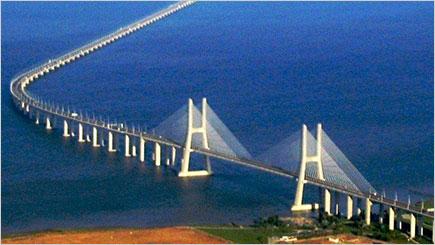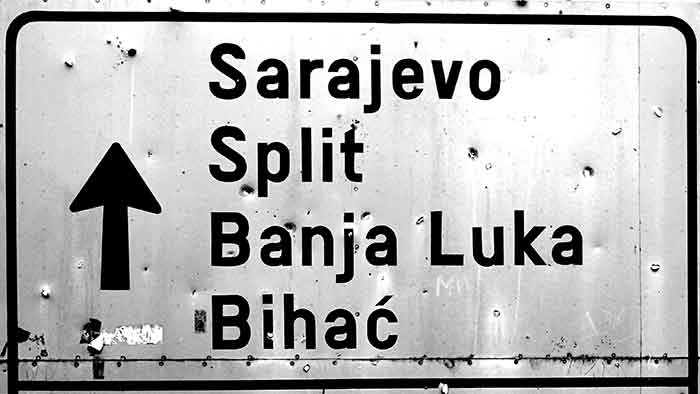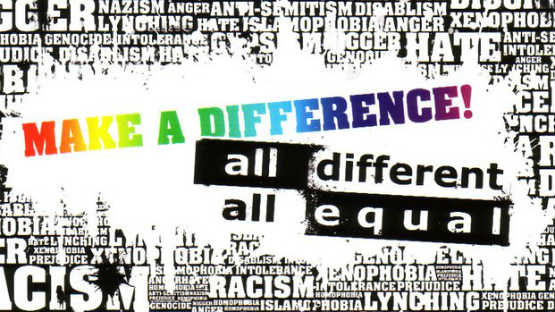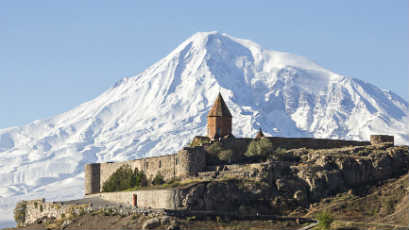Asset Publisher

Moving your intellectual luggage across borders without losing its value
The Lisbon Recognition Convention: law, policy, and practice - 1997
Sjur Bergan

That is the definition of recognition in the more formal language we use in Council documents. But you can think of it in more colorful terms. Imagine you want to move to another country and you pack all your qualifications in a suitcase. When you take your suitcase across the border, you may have to leave part of the value of those qualifications behind at the customs station. That is at least how many students and graduates moving to another country have felt the recognition procedure: as a procedure that diminishes the real value of their qualifications because those who assess their qualifications in the new country are more intent on protecting their own education system than on helping those who arrive from the outside. Protectionism is not an issue of trade alone.
The reality is a bit more complex than the theory, in part because of the complex legal framework involved. The Council of Europe had no less than five conventions that covered various aspects of the recognition of qualifications (“recognition” for short). UNESCO had another convention for the Europe Region, which includes most Council of Europe members plus some other countries, including Canada, Israel, and the United States. Add to this the fact that most of the conventions were older than the students they aimed to help, and you get a strong case for change.
Conversations with UNESCO started in 1992, and we quickly decided that writing a new convention was better than trying to amend each of the six old ones. After a feasibility study in 1993, the Council of Europe and UNESCO Secretariats started drafting in 1994 with the help of an expert group. This group was chaired by Kees Kouwenaar of the Netherlands and included education policy makers and recognition specialists from some 10 countries. The Education departments of both organizations were lucky to have our legal experts on board from an early stage, as drafting a convention raises issues beyond our expertise and also represents a unique literary genre. Not surprisingly, agreeing on definitions took up a disproportionate part of our time.
Since the convention was to be developed jointly by the Council of Europe and UNESCO, we could not use any of the committees or groups that were specific to one of the organizations, at least in the final phase. Therefore, we decided to hold an ad hoc meeting of potential parties in The Hague in November 1996 before moving on to adopting the convention at a diplomatic conference in Lisbon, at the Gulbenkian Foundation, on April 8 – 11, 1997.
Both the Netherlands and Portugal provided excellent working conditions but there are always surprises. In The Hague, the meeting was held at the Ministry of Foreign Affairs, where there was no problem finding meeting rooms with interpretation booths and good secretariat facilities. However, there were not quite enough places around the table for all Heads of Delegation. Since there were not many places missing, we solved the problem by putting some delegations at the fairly sharp and narrow corners of the table. Since delegations had to be placed in English alphabetical order, this unfortunately meant that a couple of the more circumferentially enhanced Heads of Delegation ended up in the narrower corner seats.
The diplomatic conference in Lisbon produced a memorable set of anecdotes, too. In the run up to the conference, the biggest challenge was not the content of the convention but reconciling the rules and regulations of two organizations with well-established but different bureaucracies. Since we would write the convention in four languages – English, French, Russian, and Spanish – we decided the Council could be responsible for our two official languages and UNESCO for the two additional languages of its Europe region. It turned out that the Council and UNESCO recruited their interpreters through different professional organizations and pay them at different rates.
On the content and legal side, we thought most of the tricky issues had already been hammered out in The Hague. That turned out to be an optimistic view, and we were in for the most intensive conference any of us had been through. From the opening session on Tuesday morning until the convention was adopted on Friday evening, I slept six hours: four the first night, two the second and on the third there was just enough time to go back to the hotel, take a shower, and change clothes before going back to the Gulbenkian Foundation. On Thursday afternoon we sent all delegations sightseeing in Lisbon while the secretariats and key experts prepared what we hoped would be the final version that would be adopted on Friday. We prepared both clean and track changed versions, and everything looked fine on the screen. When we printed out the French version, however, the whole text came off the printer in strike-through. It took us quite some time to discover that the problem was not in the text but in the cable that connected the computer we used for the French version and the printer.
Each language version of the text had its own challenges. We used the English as the working version and adjusted the other versions as we went along. Even if many countries refer to diplomas, degrees, awards, or similar terms in their own languages, we decided to use “qualifications” as a generic term that was not specific to any one system. One objection was that “qualifications” did not have this meaning in French, to which the answer was that it did now, since the term was defined in and for the purposes of the convention. A second stumbling block was with the term “competent recognition authority”, i.e. the bodies authorized to make recognition decisions in each country. The Russian translators told us the obvious translation into Russian brought associations of the KGB; we told them to find another term.
But the worst challenge was with Spanish. The early conventions, which the Lisbon Recognition Convention was to replace, refer to “equivalence”. In the new convention we used “recognition” because we wanted to move away from a detailed comparison of curricula where recognition depended on close compatibility to an approach where those assessing qualifications looked at whether applicants had broadly compatible competences. This was in some ways a precursor of what is now referred to as learning outcomes, which are defined as identifying what the holder of the qualification knows, understands, and is able to – and also what (s)he is willing to do or refrain from doing. The Spanish translators, however, stuck to the old term and refused to change the term “equivalence” even if we had alerted them to the problem well before the conference. They relented only when the Spanish delegation rightly refused to adopt the Spanish version unless the mistake were corrected. Then they ran out of time. The Spanish terms are equivalencia and reconocimiento, and they are not the same grammatical gender. Therefore every article and adjective also had to be changed. As the only Spanish speaker in either secretariat at the conference, I was delegated to sit through the final night with the Spanish translators.
On Friday, April 11, however, everything was ready and the conference adopted the Lisbon Recognition Convention1 in the presence of the Secretary General – Daniel Tarschys at the time – the UNESCO Assistant Director General for Education, and the Portuguese Minister of Education. The closing session was held in the big auditorium of the Gulbenkian Foundation, which as very comfortable seats. That was great for most delegates but something of a challenge for those of us who had worked through four days and three nights. I had the feeling there were waves of electricity trying to make their way through my brain as I was fighting the urge to sleep. One of the Vice Presidents of the diplomatic conference lost the battle and fell asleep but luckily did not snore.
So, had my sleepless night served any purpose? Had it been worth the effort? I would not hesitate to say yes. The text of the convention itself has enabled us to take some important steps forward. The move from “equivalence” to “recognition” is much more than just a terminological change; it translates a change of attitudes. The same is true for the fundamental provision of the convention: that a foreign qualification or period of study shall be recognized unless the competent recognition authority can demonstrate that it is substantially different from the corresponding qualification in the country in which recognition is sought.
This legal mouthful means two things. Firstly, even if no text can provide a complete definition of “substantial difference”, that difference has to be important in terms of what the applicant intends to use the qualification for. Many small differences between qualifications, study programs, and education system are unimportant. For example, it is not important whether you have read a specific book as long as you understand the subject. This point is not as far-fetched as it may sound: at my alma mater, the University of Oslo, there was a very well renowned professor of literature who reportedly managed to block the recognition of any language or literature degree that did not include at least one work from before the 17th century.
Secondly, the burden of proof lies with the recognition authority and not with the applicant. Incidentally, we could not we could not use the term “burden of proof” in the text itself or in the Explanatory Report because the representatives of many countries felt it would imply they could be taken to court if they did not implement the convention. The main thing, however, is that if you apply for recognition, you of course have to supply all the documents that support your case but it is not up to you to argue why your qualification should be recognized. You provide your diploma and any other documents that support your application, but it is up to the competent recognition authority to demonstrate why it should not, if that is the conclusion it draws after assessing your application. Some of the other articles of the convention were also innovative, and overall the convention has set the standard for later reviews of UNESCO conventions for other regions of the world. A new convention for Asia and the Pacific was adopted in 2011 but does not yet have enough ratifications to enter into force.
On some points, of course, compromise was necessary, and we could not go as far as we had wanted. In 1997, there was still disagreement about whether formalized quality assurance of higher education institutions and programs was required. Only five years later the discussion had shifted to what kind of quality assurance system countries needed, and I’d like to think the Lisbon Recognition Convention played some small role in moving the debate forward. We got around this difficulty by writing separate provisions for countries that had and those that did not have formal quality assurance systems. Even those that did not should at least be able to say which institutions and programs belonged to their education systems. If not, they would in effect not have an education system. The concept of “education system” has proved to be important also in other contexts, including in the development of the European Higher Education Area (Bologna Process)2. This concept was also important in the input the Education Department later provided as part of the Council’s advice to the negotiations on the Kosovo*3 status process led by former Finnish President Martti Ahtisaari.
In the first period after the diplomatic conference, the focus was on encouraging countries to ratify. The convention went into force with the fifth ratification in February 1999, less than two years after the diplomatic conference. Today there are few Council of Europe conventions that have been ratified by more countries than the Lisbon Recognition Convention. The current count is 53 ratifications with two additional countries (Canada and the United States) that have signed but not as yet ratified it. The parties to the convention include every country in the European Cultural Convention except Greece and Monaco.
However, the real value of a legal text depends on it being implemented. It is no surprise that much still needs to be done to make the legal text a living reality for students, teachers, and graduates. The convention relies on national information centers in each country because this is where you can get information on the education system of that country as well as on how foreign qualifications will be recognized there. Each center plays an important role in developing recognition practice in its own country. Together, all national centers play a role in developing European practice through the ENIC Network, run jointly by the Council of Europe and UNESCO4.
A survey carried out slightly less than one year ago shows that much has been achieved. All countries now have a national information center5 and most have developed national regulations covering the right of applicants to have an assessment as well as recognition procedures and criteria. Perhaps not surprisingly, however, some national regulations place more emphasis on procedures than on criteria. 36 countries specify how fast they commit to treating an application, and all except one make the decision within four months, which is the time indicated in the convention. Many of them treat applications considerably faster, and in every country all applicants have the right to appeal a recognition decision. Most ENICs organize training courses for higher education institutions and others who assess qualifications and function as resources centers within their countries. Most countries also provide online information on their education system and on the institutions that make up their system, even if around one in five still do so in their national language only. Only 7 countries have a national definition of “substantial differences” but practice nevertheless seems reasonably coherent throughout the European region.
Some practice still needs improvement. The importance of learning outcomes in the recognition process is highly diverse but generally unsatisfactory. There is still too much emphasis on input and too little on outcomes. Too often, credentials evaluators look too much at the duration of a study program and not enough at the competences it develops. Too often the question is how long you have studied and not what you have learned, even if few would now imitate the literature professor I referred to above. 10 countries indicate that if a similar program does not exist in their own system, they consider this a substantial difference even if studying something you cannot study at home is often part of the motivation for studying abroad. Six countries consider rankings as recognition criterion even if rankings say next to nothing about the quality of an institution. In the best of cases, rankings may say something about the quality of research in certain disciplines, typically natural sciences, but they are meaningless as measures of teaching quality or the overall quality of a university.
The weakest point in implementation also illustrates why the recognition of qualifications is not just a technical issue but affects the lives of people. With the refugee crisis in Bosnia and Herzegovina and other parts of former Yugoslavia in the 1990s, we managed to include a provision on the recognition of qualifications held by refugees, displaced persons, and persons in a refugee-like situation. Many refugees for good reasons cannot adequately document their qualifications, and in many cases they will never be able to do so because the archives of the university may no longer exist or authorities may not be very helpful to those who have fled. If your diploma is from the University of Aleppo and you did not manage to take it with you when you fled, it is unlikely you will ever see it again. Aleppo is basically a destroyed city and the university archives are unlikely to have survived. That should not prevent you from using your qualification. The survey shows that only 30 per cent of countries have taken measures to help refugees get such qualifications recognized.
We are now responding in two ways. On the one hand, we are developing a recommendation that we hope the Convention Committee will adopt toward the end of 2017. That would be a worthy way of marking the 20th anniversairy of the Convention. Secondly, we are launching a pilot project for a Refugee Qualifications Passport with the Greek authorities and the recognition centers of Greece, Italy, Norway and the United Kingdom. Policy and practice go together. In the project, we will look at whatever documentation participants can produce, interview them, and then issue a Refugee Qualifications Passport if our experienced credentials evaluators consider it likely that the participants have the qualification they claim to have.
Twenty years on, the Lisbon Recognition Convention is alive and well. It is the only international treaty underpinning the European Higher Education Area. It has improved recognition practice throughout Europe. It is helping students and graduates move across borders without having to leave part of the real value of their qualifications behind. It is one of the Council of Europe conventions with the highest number of ratifications and one of the few developed jointly with another international organization. Implementation can and must still be improved but having been one of the main authors of the Lisbon Recognition Convention is one of the things I am most proud of in my 25+ years with the Council of Europe. It is more important than ever that young and less young people are able to carry their intellectual luggage across borders without having to leave a part of its value behind at the customs station.

6b59.jpg?version=1.0&t=1568641862930&download=true)


